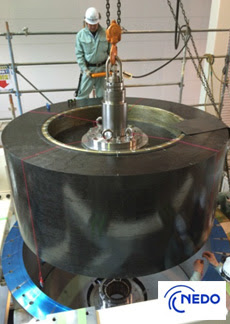
Breaking News
 Quantum walkie-talkie: China tests world's first GPS-free radio for border zones
Quantum walkie-talkie: China tests world's first GPS-free radio for border zones
 RIGHT NOW!: Why was lawyer Van Kessel, of the civil case on the merits in the Netherlands, arrested?
RIGHT NOW!: Why was lawyer Van Kessel, of the civil case on the merits in the Netherlands, arrested?
 PENSION FUNDS PANIC BUYING SILVER – Ratio Below 60 Triggers $50B Wave (Danger Next Week)
PENSION FUNDS PANIC BUYING SILVER – Ratio Below 60 Triggers $50B Wave (Danger Next Week)
 Dollar set for worst year since 2017, yen still in focus
Dollar set for worst year since 2017, yen still in focus
Top Tech News
 EngineAI T800: Born to Disrupt! #EngineAI #robotics #newtechnology #newproduct
EngineAI T800: Born to Disrupt! #EngineAI #robotics #newtechnology #newproduct
 This Silicon Anode Breakthrough Could Mark A Turning Point For EV Batteries [Update]
This Silicon Anode Breakthrough Could Mark A Turning Point For EV Batteries [Update]
 Travel gadget promises to dry and iron your clothes – totally hands-free
Travel gadget promises to dry and iron your clothes – totally hands-free
 Perfect Aircrete, Kitchen Ingredients.
Perfect Aircrete, Kitchen Ingredients.
 Futuristic pixel-raising display lets you feel what's onscreen
Futuristic pixel-raising display lets you feel what's onscreen
 Cutting-Edge Facility Generates Pure Water and Hydrogen Fuel from Seawater for Mere Pennies
Cutting-Edge Facility Generates Pure Water and Hydrogen Fuel from Seawater for Mere Pennies
 This tiny dev board is packed with features for ambitious makers
This tiny dev board is packed with features for ambitious makers
 Scientists Discover Gel to Regrow Tooth Enamel
Scientists Discover Gel to Regrow Tooth Enamel
 Vitamin C and Dandelion Root Killing Cancer Cells -- as Former CDC Director Calls for COVID-19...
Vitamin C and Dandelion Root Killing Cancer Cells -- as Former CDC Director Calls for COVID-19...
 Galactic Brain: US firm plans space-based data centers, power grid to challenge China
Galactic Brain: US firm plans space-based data centers, power grid to challenge China
Current Flywheels moving to Superconducting flywheels using carbon fiber...

In 2015, Japan built the world's largest-class superconducting flywheel power storage system with a superconducting magnetic bearings. The completed system is the world's largest-class flywheel power storage system using a superconducting magnetic bearing. It has 300-kW output capability and 100-kWh storage capacity, and contains a CFRP (carbon-fiber-reinforced-plastic) flywheel. This flywheel is 2 meters in diameter and weighs 4 tons, and is rotated with a superconducting magnetic bearing at a maximum speed of 6,000 RPM. This is the world's first superconducting magnetic bearing which uses superconducting material both for its rotor and bearing, and is capable of supporting heavy weight, although it is a compact-sized system.
The flywheel is made by stacking nine layers of CFRP rotors with a 2-meter outer diameter, 1.4-meter inner diameter and 10-centimeter thickness. With this method, flywheels of different storage capacities can be made by changing the number of layers.
It had grid-connection tests with a megawatt-class solar power plant at Komekurayama in Yamanashi Prefecture.



